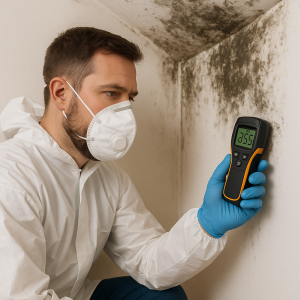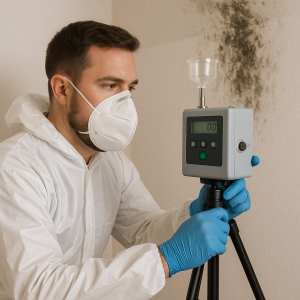5 Tools Used for Mold Assessments
5 Essential Tools Used in Professional Mold Assessments
When it comes to detecting mold in your home or business, a professional mold assessment goes far beyond just a visual inspection. Trained inspectors rely on a combination of experience and specialized tools to uncover hidden mold growth, moisture issues, and indoor air quality concerns. If you’re wondering how mold inspectors get accurate, science-backed results, here are five of the most important tools they use—and why each one matters.
1. Flashlight: The First Line of Inspection
It may seem basic, but a high-powered flashlight is one of the most essential tools in a mold inspector’s kit. Mold often hides in dark, hard-to-reach areas—behind appliances, under sinks, inside HVAC ducts, or in basements and crawlspaces. A quality flashlight helps inspectors spot discoloration, water stains, or surface mold growth that might be missed in poor lighting. It’s the first tool used to identify potential problem areas that need further investigation.
2. Moisture Meter: Finding the Source of Mold
Mold thrives in moist environments, so identifying moisture is a top priority during any assessment. A moisture meter measures the water content of building materials like drywall, wood, and concrete. When inspectors find areas with elevated moisture levels, it often points to leaks, poor ventilation, or hidden mold. Pin-type meters use metal probes to detect moisture within materials, while pinless models scan surfaces without causing damage. This tool is critical in understanding not just where mold is growing, but why.
3. Air Sampling Machine: Testing the Air You Breathe
Even if there’s no visible mold, spores can still be present in the air—and that’s where air sampling machines come in. These devices collect air samples using a vacuum pump and capture mold spores on a collection medium. The samples are then sent to a certified lab for analysis. Air sampling helps confirm if mold is present in concentrations that may affect indoor air quality and health. It’s especially useful when someone in the home has unexplained allergies or respiratory symptoms.
4. Hygrometer: Measuring Humidity Levels
Humidity is a key factor in mold growth. A hygrometer measures the relative humidity of the air inside your home. Mold tends to flourish in environments with humidity levels above 60%, especially in places like bathrooms, basements, and attics. By measuring indoor humidity, inspectors can determine if the overall conditions are conducive to mold growth—even if no mold is currently visible. Keeping humidity in check is one of the easiest ways to prevent future mold problems.
5. Thermal Imaging Camera: Seeing the Unseen
A thermal imaging camera, also known as an infrared camera, detects temperature differences behind walls, ceilings, and floors. Areas of water intrusion often show up as cooler spots, making it easier to locate hidden leaks or moisture pockets that could be feeding mold growth. While thermal imaging doesn’t detect mold directly, it’s an incredibly effective way to spot hidden sources of moisture that need further testing.
Conclusion
Professional mold assessments are all about precision—and the tools used make all the difference. From basic flashlights to high-tech thermal cameras, each instrument plays a critical role in diagnosing mold issues and providing a clear path to remediation. At Indoor Air Testing, we use these industry-leading tools to deliver thorough, accurate assessments that help you protect your home, your health, and your peace of mind.
Need a mold assessment? Contact us today to schedule a visit with one of our certified inspectors.











